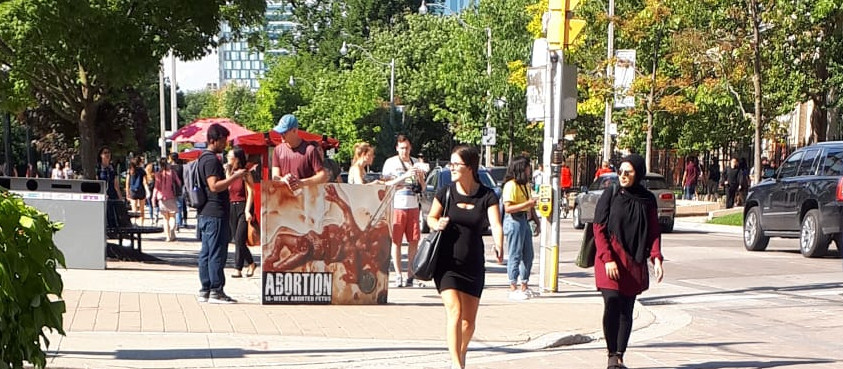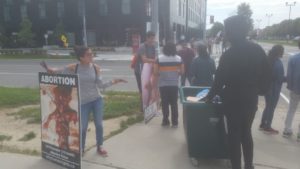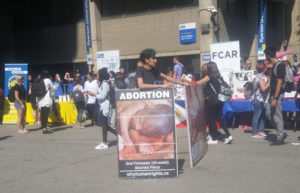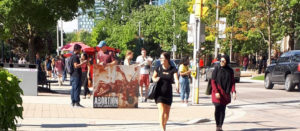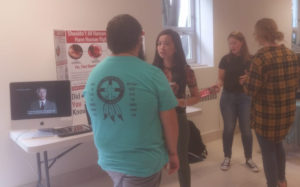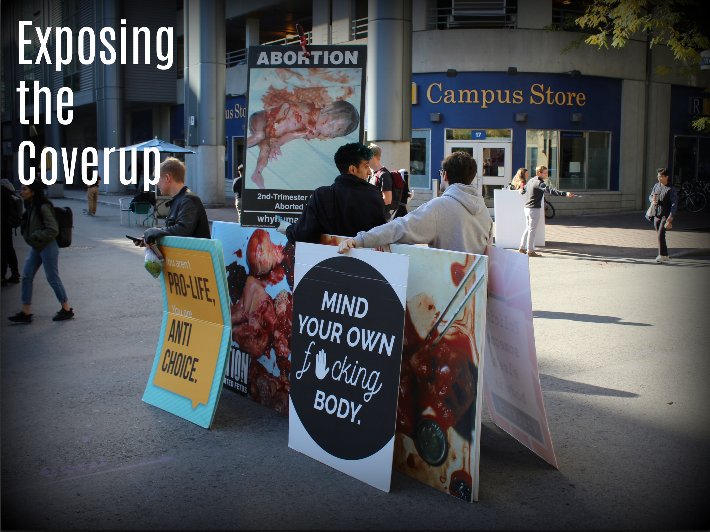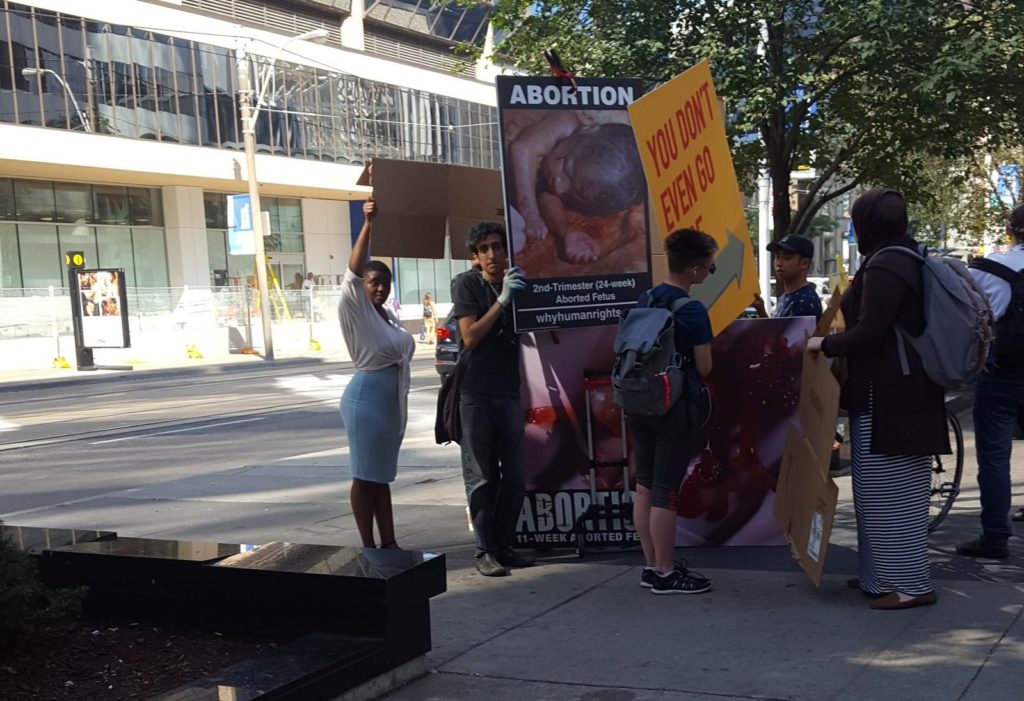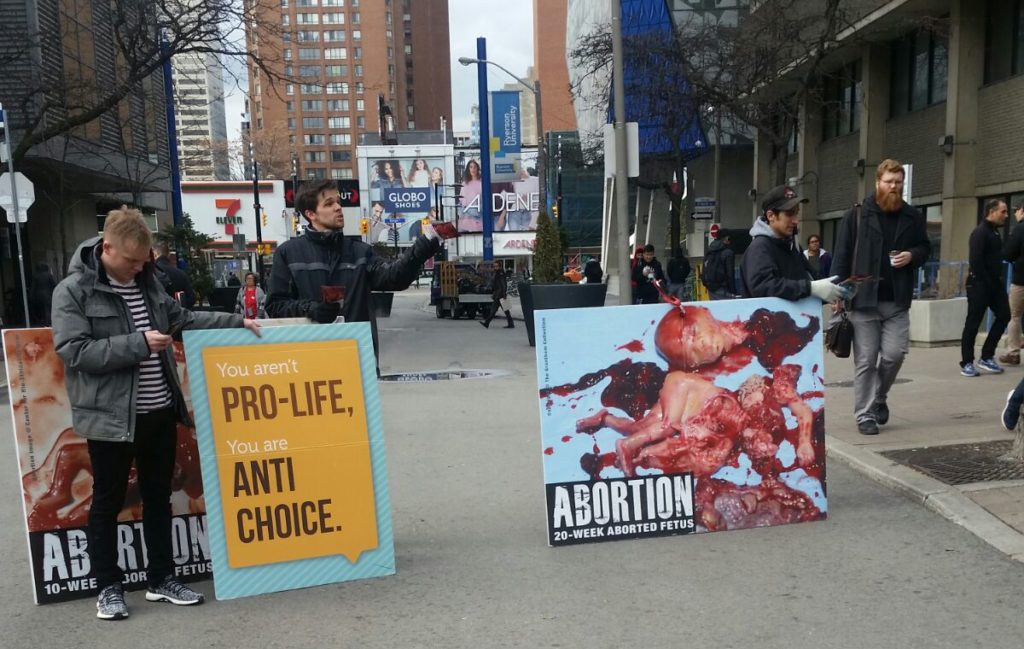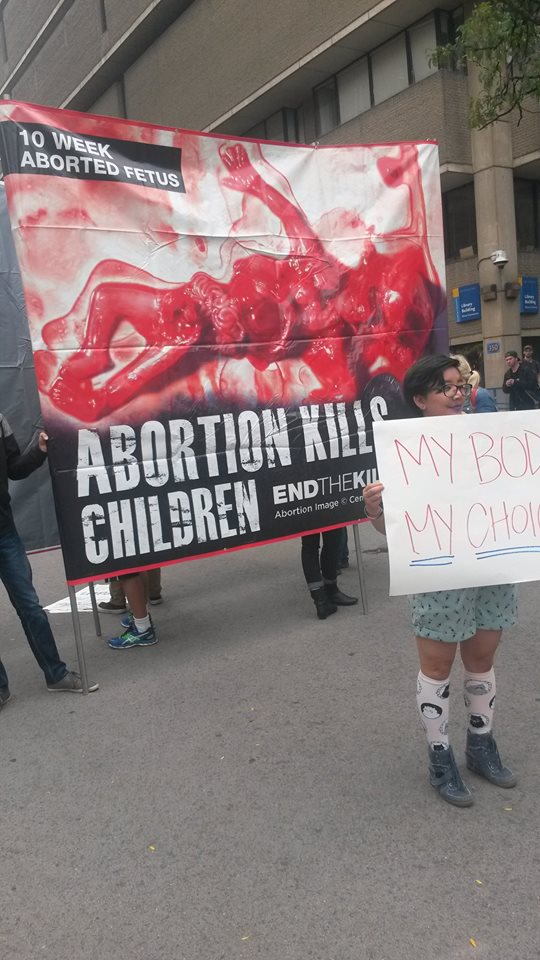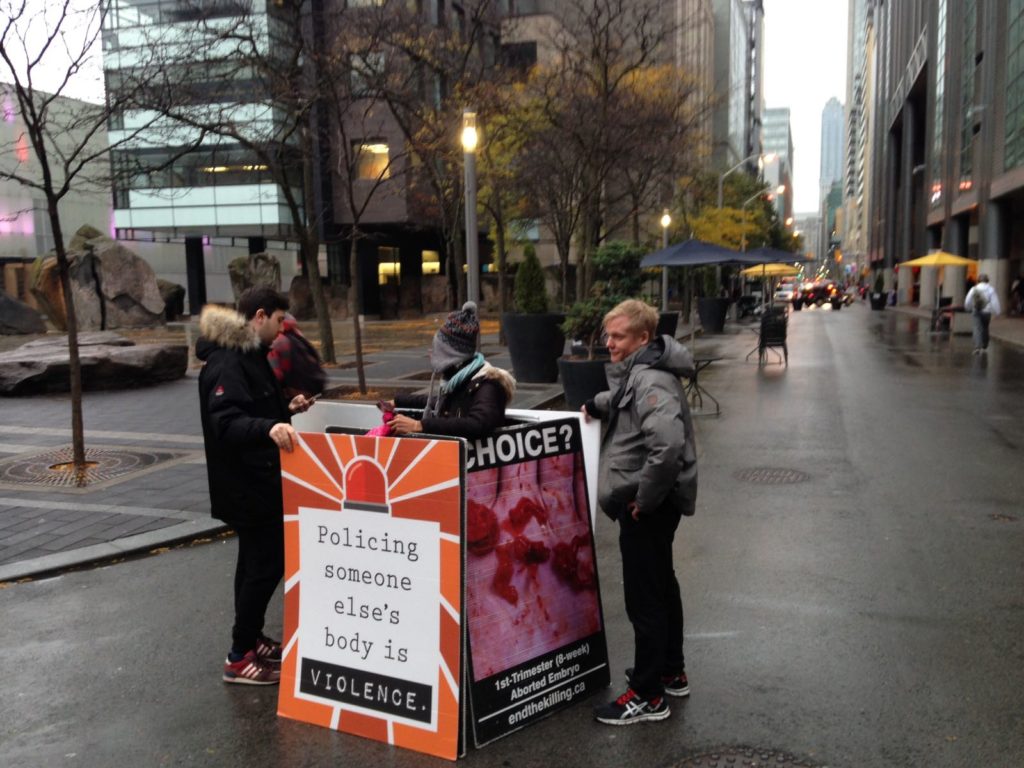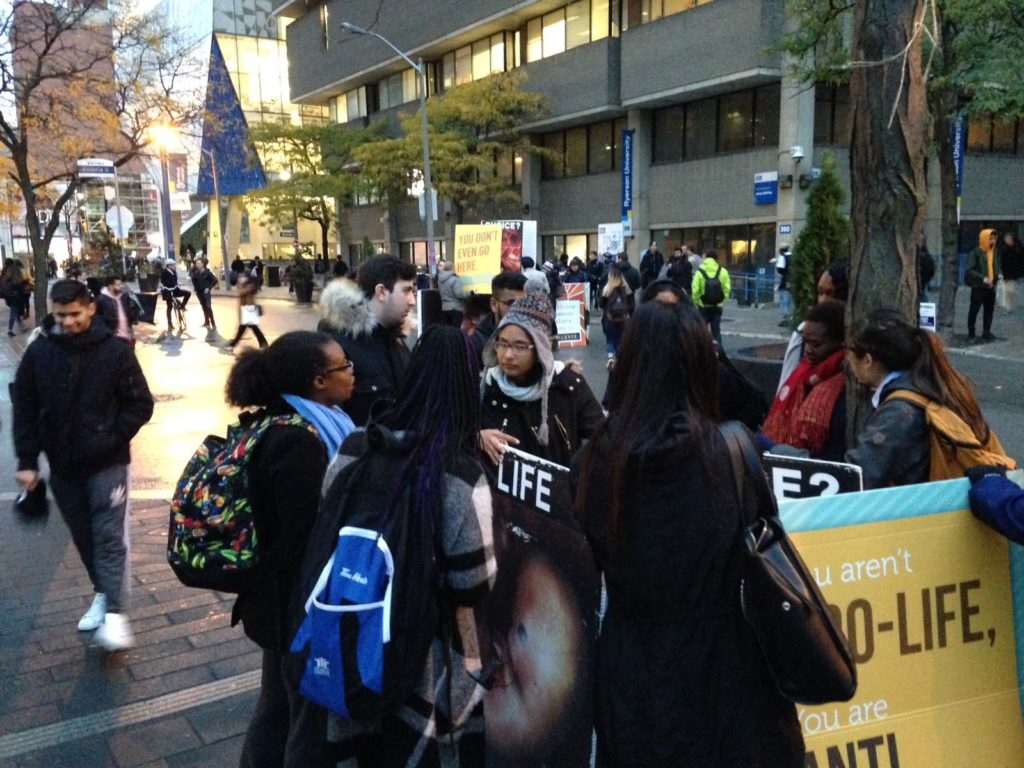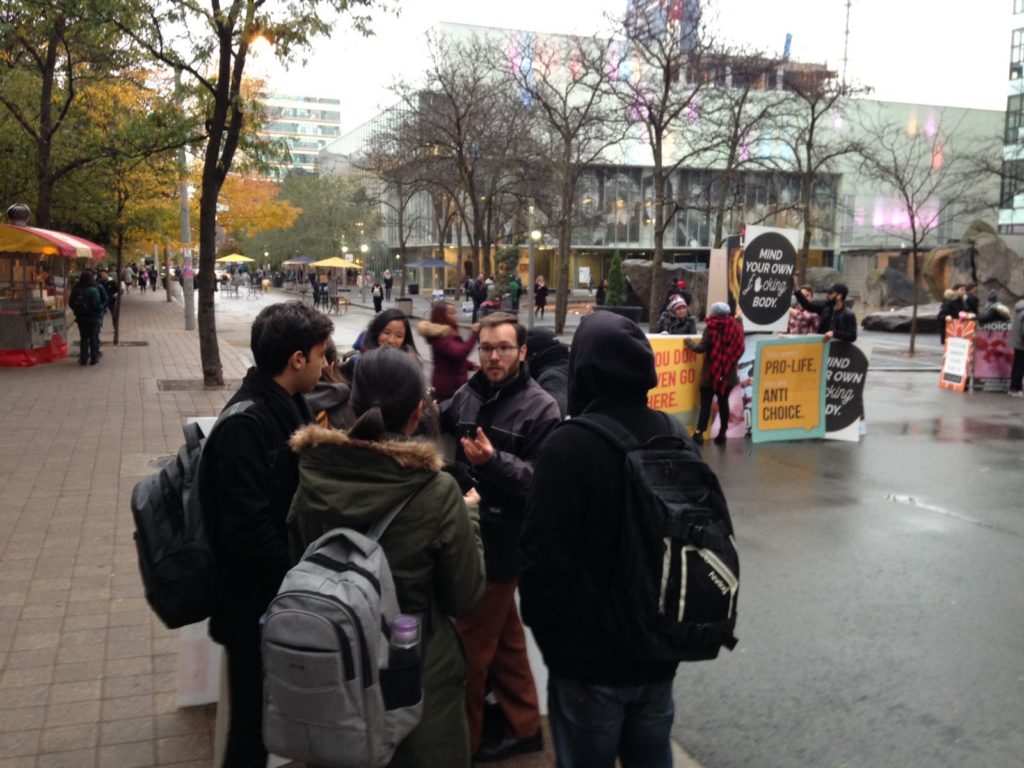Since November 2016, we’ve faced threats, assaults, thefts and other forms of pro-choice violence from the Ryerson Reproductive Justice Collective. We’ve followed up with Toronto Police and Ryerson University, and other legal action is ongoing.
After the attack by Gabby Skwarko on Monday, October 1, we are going public with the evidence we have of the pattern of aggression from this group.
Our team members have never been the subject of a police investigation for our activism. The RRJC has falsely alleged that we have assaulted them. This is categorically untrue, and we challenge the RRJC to produce any evidence whatsoever to substantiate the false allegations. Here’s our evidence of their consistent pattern of pro-choice violence.
The Ryerson Reproductive Justice Collective has been trying to figure out how to censor us and prevent us from sharing the pro-life message for two years. They have no clue how to stop us. They have tried unsuccessfully to cover up the corpses and stifle the abortion debate on campus. Despite this opposition, we continue to change hearts and minds at Ryerson.
However, our team is consistently the target of pro-choice violence from the RRJC for our peaceful and civil outreach. The RRJC resorts to violence out of desperation because they are not content with civil discourse and they have been unsuccessful in trying to censor us or prevent us from sharing our message. This needs to stop. No one should be assaulted for having a civil conversation on a university campus. We are shining a light on the RRJC’s deplorable conduct to put an end to it.
Featuring…
- Paige Galette, then Campaigns Coordinator for CESAR (Continuing Education Students Association of Ryerson) and Co-Founder of the RRJC (Ryerson Reproductive Justice Collective) — a variety of incidents including theft, threats, disruption of University-sanctioned event. Cautioned by police, no charges laid. Student union employee, not subject to Ryerson University sanctions.
- Cassandra Myers, then RSU (Ryerson Students Union) staff member as coordinator in an Equity Centre, then Ryerson Board of Governors 2016-2017 — assault by water throwing, theft and destruction of property. Cautioned by police, no charges laid. Ryerson University refused to investigate a complaint under the Student Code of Conduct after the police investigation.
- Gabriela “Gabby” Skwarko, 2017-2018 Faculty of Arts Director for the RSU (Ryerson Students’ Union). Investigations underway from Toronto Police and Ryerson’s Student Conduct Office from Oct 1, 2018 attack.
- Julia Pivetta and Alex Douglas — stole a sign with an image of a healthy embryo and attempted to put it into the trash. Cautioned by police, no charges laid. The Ryerson Student Conduct Office applied penalties, but refused to say what penalties were applied.
- Liezl Yance, President (Interim) CESAR (Continuing Education Students; Association of Ryerson), seen blocking camera while incidents were in progress.
- Hannah Levitt-Day, grabbing camera and using threatening language (“I want to rip you apart ’cause I hate you guys so much”, “I’m really gonna grab a can of spray paint and just spray you guys” minutes before Gabby Skwarko’s attack)
Some people question why we film our demonstrations. The video should make the answer to that question obvious — for our own safety and protection, we film during our demonstrations so that when we face pro-choice violence, we have evidence to report to the authorities.
